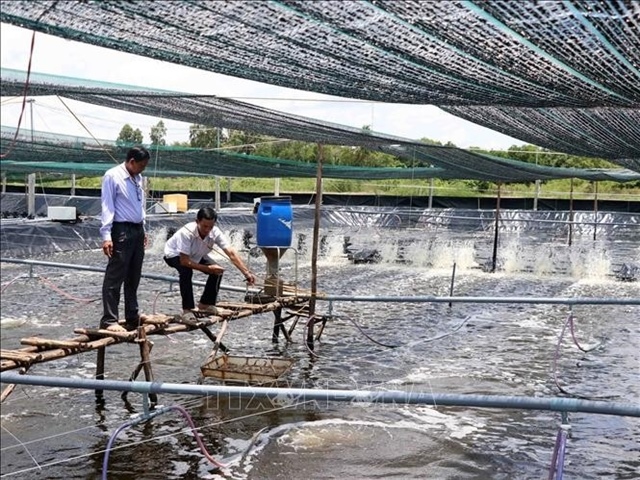Developer remains upbeat as Vietnam’s bauxite project logs $165mn loss
Developer remains upbeat as Vietnam’s bauxite project logs $165mn loss
A bauxite megaproject in Vietnam’s Central Highlands has been making losses totaling VND3,696 billion (US$165 million) in the last three years, but the developer is unconcerned, believing that it will start generating profits in 2017.

Vietnam currently has two major bauxite mining projects, Nhan Co in Dak Nong Province and Tan Rai in Lam Dong Province, both developed by Vinacomin, the country’s state-run coal and minerals giant.
Bauxite, an aluminum ore, is the world's main source of aluminum.
Nguyen Van Bien, Vinacomin’s deputy general director, confirmed toTuoi Tre (Youth) newspaper that the Tan Rai bauxite plant has been operating at a loss.
The facility was commissioned in October 2013 and was forecast to suffer losses within the first four years of operations, according to the official.
“However, the real losses are much bigger than expected, now standing at VND3,696 billion,” Bien said.
The projected losses for the project were originally VND860 billion ($38.39 million).
Bien quickly added however that the difference between projections and reality is not really VND2,836 billion ($126.61 million), and that the losses have little to do with his company’s capacity.
“Real losses from business activities were only VND2,520 billion [$112.5 million], or VND1,660 billion [$74.11 million] higher than predicted,” he elaborated.
“The remaining VND1,176 billion [$52.5 million] losses can be attributed to foreign exchange rates.”
A corner at the Tan Rai plant
Bien said the ‘projected losses’ in 2014 were “only for reference,” before blaming poor business performance on a myriad reasons.
“The biggest factor is the current market rate,” he said.
“We had expected the aluminum price to be $326 a metric ton in 2014, from which it would steadily increase by an annual rate of 1.21 percent.
“We then anticipated the aluminum price to average $350 a ton in the 30-year course of the project.”
In reality, prices at some points slumped to as low as $200 a ton, leading to huge losses, he explained.
Bien also blamed several policy changes which he said has diluted the effectiveness of the project.
“The government at first allowed both Tan Rai and Nhan Co to enjoy export duty exemption, but the projects now have to pay a 2 percent export tax,” he said, adding that natural resource taxes and other fees had also increased.
The Tan Rai bauxite project was approved for construction at a total cost of VND7,787 billion ($347.63 million), with a capacity to produce 600,000 metric tons of product per year.
However, the investment plan has been adjusted four times, with the project eventually costing VND15,414 billion (688.13 million) in initial investment.
Despite this, it had been widely anticipated that the project would likely incur losses once commissioned.
Time to gain
Asked about the future of Tan Rai, the Vinacomin official remained upbeat about the potential for the project to yield a profit.
“We have mastered the technology and managed to cut costs,” he explained.
In 2014, the cost price of a metric ton of aluminum produced by Tan Rai was as high as VND5.1 million ($228), but the 2016 rate was only VND4.1 million ($183).
Bien said the export price currently stands at $350 a ton, or nearly VND8 million, meaning the project should now be able to make gains.
“We expect to make a VND100 billion [$4.46 million] profit in 2017, and this will rise in following years,” he said.
“We will aim to recoup investment in ten or 12 years from 2013.”
The other bauxite plabt, Nhan Co, was approved in 2007 with a total investment of VND3,285 billion ($146.65 million), and is capable of producing 300,000 metric tons of product per year.
Total investment has spiked to VND16,821 billion ($750.94 million), with the developer aiming to more than double its capacity to 650,000 metric tons per year.




















